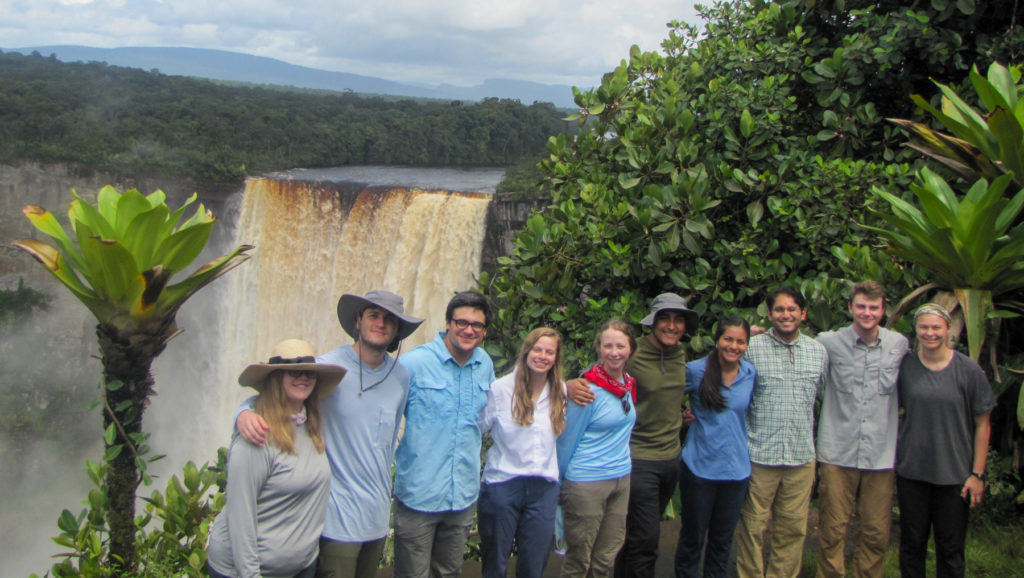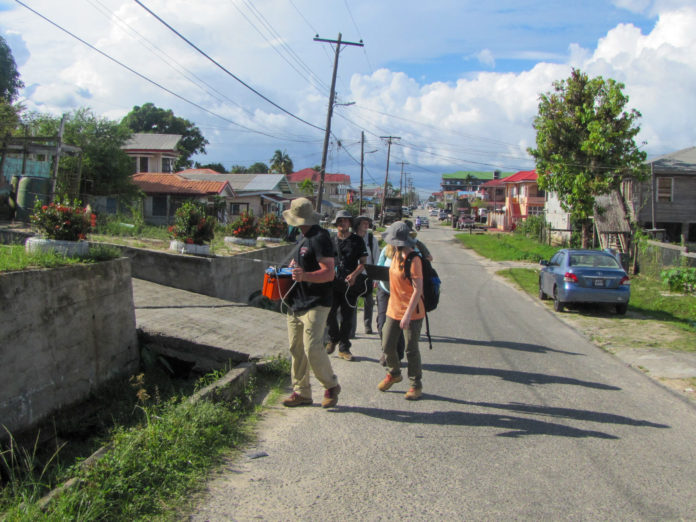
A Mercer University team exploring ways to reduce the release of toxic chemicals in artisanal and small-scale gold mining continued its work in Guyana this summer.
The Mercer On Mission trip was led by Distinguished University Professor of Chemistry Dr. Adam Kiefer — who has been working on the problematic use of mercury in artisanal and small-scale gold mining for over a decade — and supported by a grant from Conservation International-Guyana.
Artisanal and small-scale gold mining is gold mining conducted by individual miners or small enterprises.
“Individuals right now cannot just walk away from gold mining with mercury. This is how they feed their families. This is a lifelong problem,” he said. “But we are taking important first steps in addressing this.”
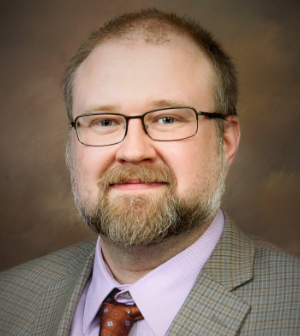
The team worked in the city of Georgetown and the townships of Bartica and Mahdia, where students focused on mapping areas of mercury pollution, talking with miners and gold shop owners, and outlining the gold supply chain from the miners to the international market.
Around the world, artisanal and small-scale gold miners use mercury to extract gold from ore in a process that releases harmful chemicals and pollutes the environment. But adopting new technology can be expensive and feel risky to the miners, many of whom use tried-and-true techniques passed down through generations.
“Our students excel at asking questions to gain understanding from somebody else’s perspective,” said Dr. Kiefer, who has done similar work in Ecuador, Peru and Mozambique. “All too often in development people come in, and they say, ‘This is the solution.’ Mercer’s role is to go in and start off by listening, which is to ask the miners what the problem actually is, to ask the gold shop owners what the problem actually is.
“And once we have a better understanding of the problem, we propose solutions with people on the ground whose lives are actually impacted. We’re not there to dispense answers. We’re there to listen, learn and then work together with the community to solve problems.”
Miners use mercury in the field to extract gold from ore, heating the resulting mixture to remove the majority of mercury and produce impure gold that can then be sold. Then, gold shop owners melt the impure gold, releasing the remaining mercury into the air. These mercury vapors are highly toxic. The conventional practice of using an open flame to heat the mercury spreads the dangerous vapors throughout the environment.
Mercury used in artisanal and small-scale gold mining is the No. 1 source of man-made mercury pollution on the planet, Dr. Kiefer said.
“The reason that mercury is so bad is that it’s both persistent but mobile,” he said. “So, the metallic mercury that the miner uses can be converted into different species of mercury in the environment. Quicksilver can end up in rivers, and when it gets into rivers, it can be basically converted into methylmercury, which goes into fish, and it can bioaccumulate and biomagnify through the food chain.
“So, this mercury that a miner releases today will be a global problem for millennia to come.”
A collaborative approach
In Guyana, the Mercer team first met with representatives from governmental agencies, including the Guyana Geology and Mines Commission, Guyana Gold Board and the Ministry of Health, to get a top-down view of the problems in artisanal and small-scale gold mining.
Then, they met with miners to get a better understanding of how they use mercury. That was followed by meetings with gold buyers.
“After talking with the miners, after talking with the gold buyers, and after talking with the government officials, what the Mercer students’ job was, was to figure out where the mercury was, teach people how to use mercury more safely, and, I think most importantly, get an understanding of the practical way that gold goes from the hand of the miner to the international market,” Dr. Kiefer said.
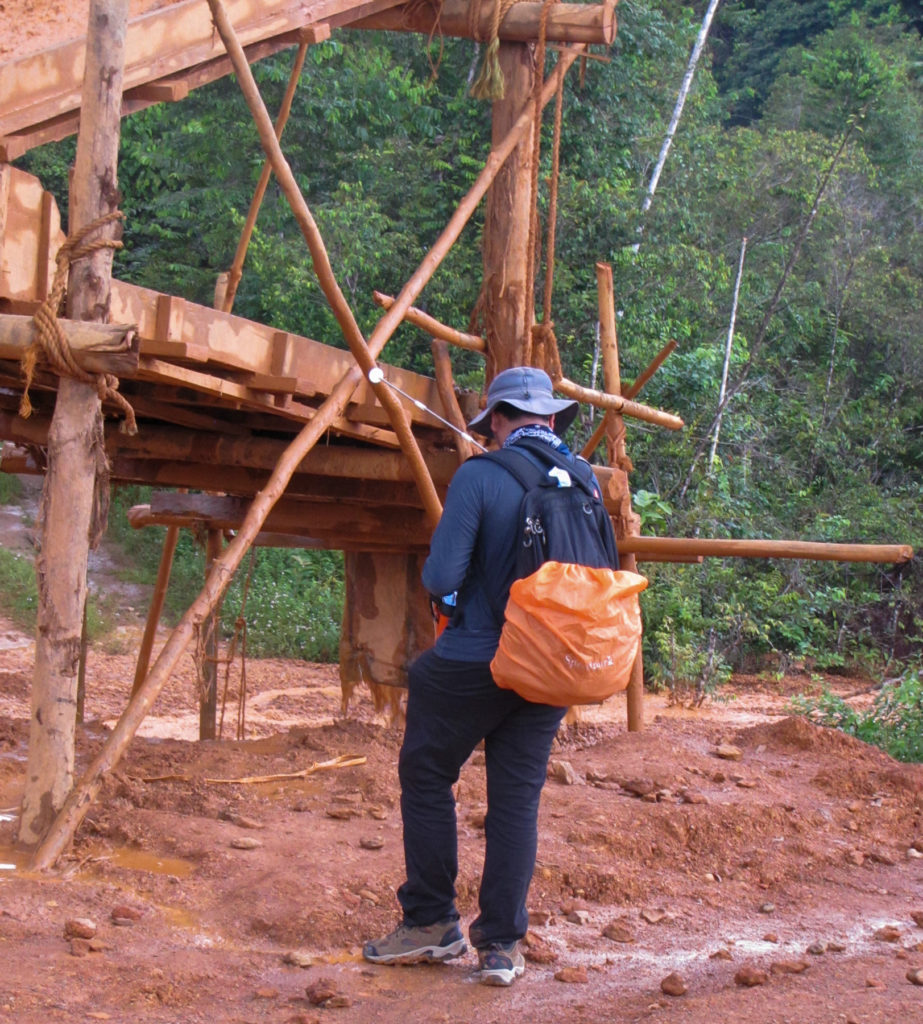
Two Mercer alumni — Samantha Brown, who graduated in 2021 with a bachelor’s degree in chemistry and neuroscience, and Sagar Patel, who graduated in 2019 with a bachelor’s degree in biomedical engineering and 2020 with a master’s degree in biomedical engineering — assisted Dr. Kiefer on the trip. Both worked in Guyana as part of Mercer On Mission when they were students.
Brown and Patel were part of a team of Mercer researchers from the College of Liberal Arts and Sciences and School of Engineering that developed and tested the University’s patented Mercury Capture System, which led to a 95% reduction in mercury emissions at one gold shop that also implemented the team’s ventilation recommendations. It works by using a targeted heating element and collecting mercury vapor that is released.
The invention led to the Mercer team receiving the top prize of $200,000 in the Artisanal Mining Grand Challenge.
Patel recalled a meeting this summer with miners from a medium-scale operation in which the Mercer team showed them the Mercury Capture System.
“These specific miners that we talked to were very progressive in their thoughts about how to be safe with mercury. … They were already taking as many precautionary steps as they could,” he said. “But when we showed them the Mercury Capture System as well as a new method of heating, they were very excited about that because it would cut time down, and they could put it in their area that’s locked for security because it was small enough.
“And the other idea of our system is that they could recapture the mercury, and a lot of times, most of that mercury that’s recaptured can be reused, and so they loved that idea because then they could continue using that mercury rather than having to purchase new mercury every time.”
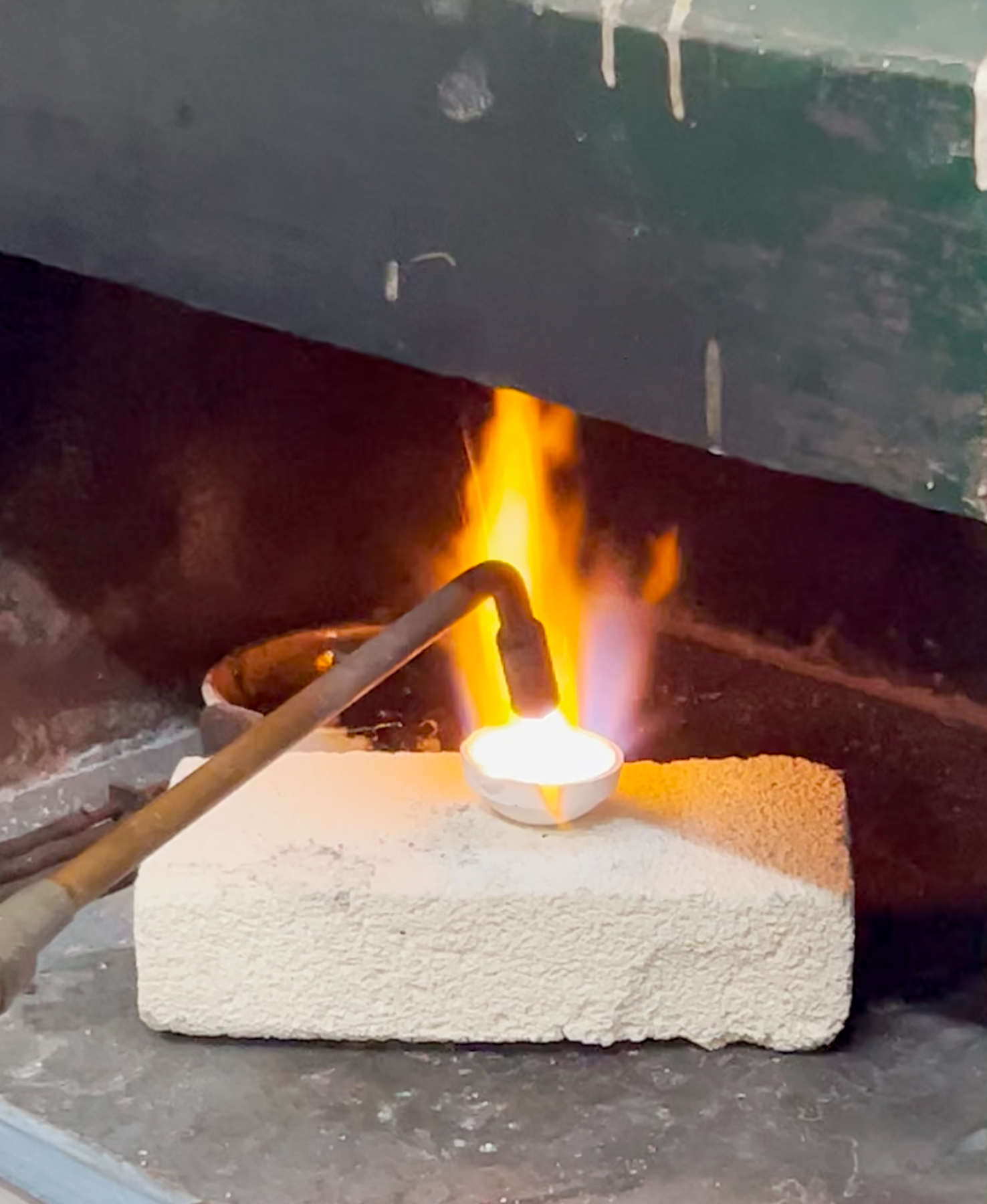
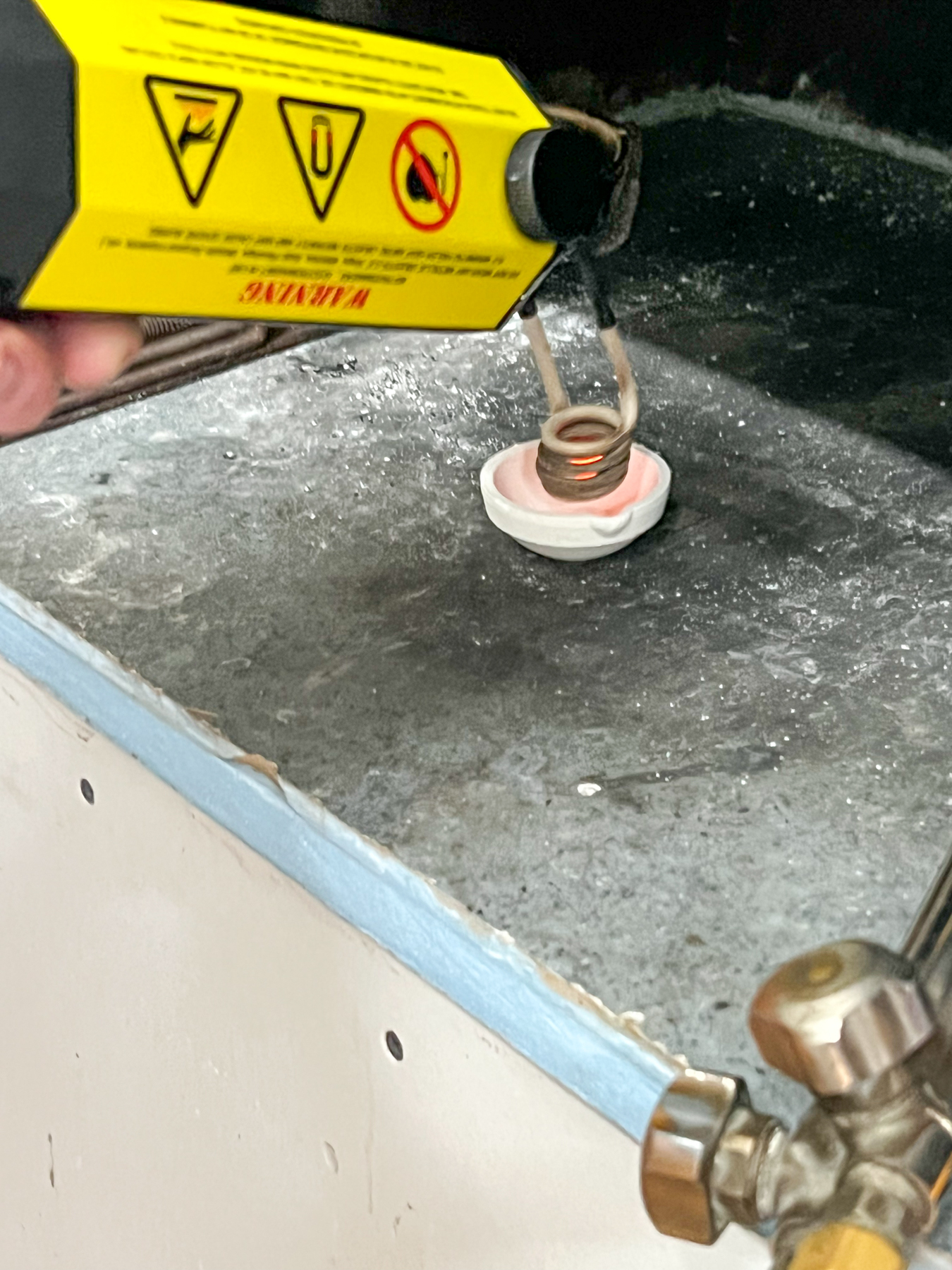
Ben Bodne, a rising junior majoring in chemical commerce, said he enjoyed using instruments to collect data on mercury pollution in the air.
“I thought that was the most interesting aspect, to see how the instruments work and how we could then triangulate that to an actual map of the city,” he said.
The students walked several miles each day collecting data, often pausing to talk with people on the street.
“We got to have lots of conversations with the people who lived in these cities, and of course they were all curious about what we were doing,” said Ben Stewart, a rising junior majoring in neuroscience. “We got to explain to them what we were doing, show them the screens and the data that’s coming in.”
He enjoyed having meaningful conversations and building relationships with the miners and gold shop owners.
“They know way more than we know,” he said. “It was good to get to talk to them and try to establish that.”
Other groups working to end mercury pollution don’t understand the miners’ and gold shop owners’ perspectives, Stewart said.
“They know mercury is bad,” he said. “But if you had to choose between — and this is what we were told over and over again — if you’ve got to choose between breathing in mercury today and feeding your family tonight, you’re going to breathe in a little mercury today, so that way your family can eat.
“That’s what these other people don’t understand, and that’s what Dr. Kiefer understands so well. It’s not, ‘Let’s go change the way you guys do your work.’ It’s, ‘Is there a way we can make this a little bit safer?’ … Us working together makes it so much better.”

Key contributions
The Mercer On Mission trip made significant progress toward the long-term goals of Conservation International-Guyana, said Ingrid Sarabo, Global Environment Facility project director for the planetGOLD project. Key developments included:
- Providing context to other consulting teams visiting Guyana;
- Reaching an agreement with the Guyana Gold Board and Guyana Geology and Mines Commission on testing of induction, or flameless, smelting equipment already shipped to Guyana;
- Holding discussions with the Guyana Gold Board and gold traders that resulted in a strong likelihood that the project will soon be able to offer policy recommendations to the Guyana government and influence key regulations in the country’s artisanal and small-scale gold mining sector;
- Identifying a licensed gold shop owner in Region 7 that is interested in collaborating with the project to demonstrate equipment suitable for artisanal and small-scale gold miners.
“Though the collaboration is still ongoing, and there is still much more to be achieved, thus far the contributions have definitely been tangible,” Sarabo said.
In addition to the artisanal and small-scale gold mining research, the team started a new project in Guyana looking at metals in paint. Initial testing of paint samples found lead in paint that was sold in cans labeled as lead and mercury free.
“We are working to better understand which paint has lead in it and the extent of the problem in Guyana,” Dr. Kiefer said.
